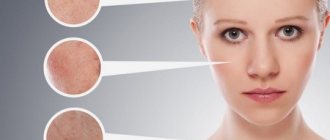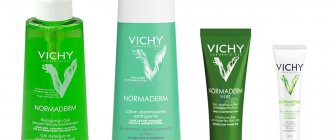→ Home → University → University in the media → Doctors told what you can get infected in the pool - and how to prevent it
Lose excess weight, straighten your posture, become more cheerful and energetic, improve your mood - there are many pleasant expectations from swimming in the pool. At the same time, many who want to swim admit that they are afraid of catching some kind of infection there. After all, you have to share a large “bathtub” with dozens and hundreds of strangers. Doctors told GO.TUT.BY whether these fears are justified.
Photo is for illustrative purposes only.
“It’s not the water in the pools that you’re afraid of, but other people’s towels.”
One of the most common fears of the average person is related to sexually transmitted infections (STIs). Like, it’s easy to catch household syphilis, gonorrhea, and chlamydia in the pool. Associate Professor of the Department of Dermatovenereology of the Belarusian State Medical University, Candidate of Medical Sciences Alexander Navrotsky, does not agree: it is unrealistic to contract an STI in the pool itself. And jokes:
“Unless you try really hard and have sex in the water.” The fact is that the water in swimming pools is disinfected with chlorine or other methods; STI pathogens quickly die in it. In addition, for a person to become infected, a certain number of pathogenic microorganisms must reach him. It is quite difficult to say exactly how many, but it is not one or two pathogens, but rather hundreds and thousands. When, along with the secretions of a sick person, microbes end up in the water, their concentration decreases sharply, and even if a small number enters the body of a healthy person, in particular, on the mucous membranes of his genital organs, the immune system will easily neutralize the “enemy.”
The risk of contracting an STI is much more likely, according to a dermatovenerologist, if you share hygiene items with a sick person.
“A washcloth or towel with wet secretions, where the pathogen retains its viability longer, can become a transmitter of any STI - from household syphilis to chlamydia,” says the doctor. — Also, most STIs (except trichomoniasis) can actually be contracted by sharing utensils or cosmetics. Therefore, those who like to drink mineral water after the pool should not demonstrate their friendliness by handing their bottle or glass to a friend, much less a stranger. And a woman putting on her beauty after bathing should not “help out” someone with her lipstick. Healthy disgust in this case will be a guarantee of maintaining health.
Symptoms
Allergic manifestations to bleach occur not only from the skin, but also from the visual and respiratory systems. Therefore, it is necessary to consider each case separately.
The most severe manifestations of an allergy to bleach are, of course, associated with the respiratory system. Symptoms usually appear within a few hours after the end of the training process, in some cases the reaction occurs directly during swimming. Here are the main signs of respiratory problems that you should pay attention to:
- Allergic type cough;
- Labored breathing;
- Frequent sneezing;
- Allergic rhinitis;
- Suffocation;
- Itching in the nose;
- Loss of taste and smell (partial or complete);
- Nasal congestion;
Frequent visits to a public swimming pool by a person with a latent form of allergies can lead to the development of bronchial asthma and a number of other diseases of the respiratory system.
Allergies from the organs of vision also occur quite often, because the eyes are perhaps the most vulnerable target. Here are the main signs of pathology:
- Burning and itching in the eyes.
- Increased tear production.
- Redness of the whites of the eyes.
- Swelling of the eyelids.
- Stinging in the eyes.
- Dryness.
In rare cases, people experience eyelash loss. The reaction develops quite quickly, the first symptoms often appear 20-30 minutes after the start of the lesson and increase over time.
As a rule, at first there is a slight pain in the eyes, a desire to rub or scratch them. Subsequently, itching and constant burning are added, occurring with every blink.
Almost all people experience skin irritation after visiting a public pool sooner or later. It manifests itself differently in each person, some have a more pronounced reaction, some have less. Recognizing skin manifestations of allergies after visiting the pool is quite simple, here’s what you need to pay attention to:
- A small rash of bright red color.
- Peeling in the area of irritation.
- Transparent blisters, similar to small dropsy.
- Increased dryness.
- Swelling.
Most often, symptoms arise rapidly, within the first few hours after contact with bleach, in rare cases after 12-14 days (this is basically how the allergic form of contact dermatitis develops, the progression of which can also trigger the development of dry eczema). In most cases, allergies are found in the groin and armpits.
Sometimes, with prolonged exposure to bleach on hair, there is increased fragility, dullness and hair loss.
“You can get foot fungus if you walk barefoot on the floor.”
Photo is for illustrative purposes only.
Concerns about fungal pathology are not unfounded, says Alexander Navrotsky. Today, mycoses are a pressing problem: according to statistics, every third person after 50 years suffers from fungal infection of the feet, which is accompanied by itching and redness of the skin, discoloration and deformation of the nails. And the humid and warm environment of swimming pools is very favorable for the habitat and reproduction of pathogenic fungi.
The causative agent of mycosis of the feet can be “picked up” in areas near the pool, in showers and locker rooms, by touching your bare foot with the floor, side or other surface contaminated with fungal spores. To prevent this, you should only walk in the listed areas in rubber or plastic slippers, which should be washed frequently.
— Some visitors, in order to avoid contracting fungal diseases, use antifungal ointment. What do you say about this precaution? - I’m asking a specialist.
“To prevent fungal infections, it is enough to follow normal personal hygiene measures,” says Alexander Navrotsky. - But if someone wants to play it safe, then let them use it. After the pool, you need to rinse your feet, wipe them dry and treat them with an antifungal agent (optionally - miconazole, terbinafine, formidron solution, etc.). Particular attention should be paid to the spaces between the fingers, where the skin sweats more, creating suitable conditions for the proliferation of the pathogen.
Causes of allergies to bleach
Photo: Rash on the stomach as a symptom of an allergy to chlorinated water
Among the reasons, two main ones can be identified:
- Primary - hereditary factor (burdened allergy history);
- Secondary - occurs due to the gradual saturation of the body with allergens over some time, allergy symptoms appear and gradually increase.
During pregnancy, expectant mothers should especially carefully avoid contact with all possible potentially active and irritating substances, because the health of her unborn child depends on this.
At-risk groups
- Persons whose work involves regular contact with chlorine. They often suffer from cough, dermatitis, shortness of breath and rash.
- Persons with prolonged exposure to compounds. This makes the top layer of skin very sensitive. Such people suffer from allergic rhinitis, asthma and other diseases.
- Persons whose work involves fabric bleaching, water treatment plants, chlorine production, etc. This also includes pool workers.
“A swimming pool is not much more dangerous than other crowded places.”
Photo is for illustrative purposes only.
Elena Poklad, a therapist of the first qualification category at the Sante treatment and consultation center, believes that treating the pool as an object of increased health hazard is overkill.
— Diseases such as scabies, pediculosis, and various viral pathologies can also be contracted in other public places—in the subway, at school, in a store. This does not mean that you need to stop visiting them. In the pool, a person is more vulnerable only from the position that almost all of his skin is open, and if there are microdamages on it, it is easier for the pathogen to “catch on.”
For those who are afraid of infections, the specialist recommends focusing on personal safety measures - be sure to take a shower before and after swimming, use only your own slippers, cap, washcloth, and pumice stone. He also advises against swimming during periods when the immune system is weakened.
“If you have even a simple runny nose without fever, it is better to postpone swimming in the pool until you have completely recovered,” says the doctor. - For the same reasons, you should not visit the pool during menstruation. Some women break this rule by using tampons, and in vain: on critical days, the cervix is slightly open, the uterine mucosa is a wound surface, the likelihood of infection increases significantly, and the body as a whole is more vulnerable during menstruation.
Is it possible to “purchase” worms, for example, pinworms, in the pool? Elena Poklad says no:
— The route of transmission of helminths is oral, that is, through the mouth. In order for parasite eggs to get inside, you need to, excuse me, drink water from the pool. Of course, accidental ingestion cannot be ruled out, but since helminths and their larvae are quickly killed by chlorine and other disinfectants, there is virtually no chance of transmission.
First aid
It is impossible to get rid of the problem on your own, but it is very easy to relieve unwanted manifestations of allergies and provide first aid to yourself before going to an allergist. First of all, you need to avoid visiting the pool, as this will invariably lead to an increase in the symptoms of the disease.
If the reaction appears on the skin, then you need to take a shower and wash your entire body thoroughly with soap. Then the skin must be treated with some kind of softening cream (a simple baby cream or skin lotion will do, you can also use Bepanten). You can relieve itchy skin with chamomile baths.
Antihistamines are taken only in cases where allergy symptoms tend to constantly and rapidly increase. For this purpose, you can take Suprastin, Loratadine or Tavegil.
“There were no cases of diseases related to water quality”
Photo is for illustrative purposes only.
The Republican Center for Hygiene, Epidemiology and Public Health GO.TUT.BY assured that “a set of preventive measures carried out in swimming pools in accordance with the requirements of sanitary legislation reduces the risk of disease to a minimum.”
“Pool administrations carry out water disinfection, daily and general cleaning, disinfection of the pool bath, disinfection of walkways, floors, benches, rugs, door handles, handrails and other equipment,” the institution said. — Water is disinfected by chlorination, bromination, ozonation, ultraviolet irradiation, and the results are controlled by laboratory tests. In recent years, there is no information on cases of infectious and parasitic diseases associated with the quality of water in the pool. There have also been no recorded cases of scabies infection from the use of wardrobes or shared benches.
Specialists from the Russian Center for Hygiene and Health reminded that visitors to swimming pools do not need to provide a medical certificate of health. These requirements were excluded from the Sanitary Norms and Rules by the Ministry of Health Resolution No. 105 dated September 22, 2009. And they were motivated by: “Compliance with sanitary, hygienic and anti-epidemic requirements for the operation of swimming pools by the administration of these facilities ensures reliable prevention of the spread of infectious and parasitic diseases.”
Author: Elena Kleshchenok Photo: Olga Shukaylo, Evgeny Erchak, Alexander Chuguev TUT.BY ., January 10, 2018
Chlorine and its effect on humans
In fact, chlorine is not a direct allergen. A negative reaction occurs only upon contact with human skin, mucous tissues and respiratory tract. Susceptibility to allergens increases when treated water is combined with other substances in the pool (human sweat, urine, hair). With regular long-term swimming, the risk of allergies increases.
An allergy to bleach is a reaction of the human immune system to the action of chlorinated compounds. The reaction is accompanied by poor health and the appearance of localized symptoms. Negative consequences appear immediately after swimming in the pool or after a certain period of time.
Causes
Sodium hypochlorite (chlorine) is widely used in medicine, everyday life and industry. It is part of many household chemicals and is used to whiten laundry and disinfect household items.
Once on the skin and mucous membranes, the substance reacts with human proteins, resulting in the formation of various toxic compounds - potential allergens.
In case of prolonged inhalation of bleach vapors, even pulmonary edema may develop, since the volatile substance easily penetrates the body through the upper respiratory tract.
Risk groups for developing this type of allergy include:
- Athletes whose activity involves being in the pool;
- Office cleaners who use bleach to disinfect floors, walls and bathrooms;
- Medical workers;
- People employed in jobs that require contact with irritants (production of household chemicals, textile industry, etc.).
WHAT SHOULD I DO TO PROTECT FROM RECREATIONAL WATER DISEASES?
- Visit swimming pools with high-quality water treatment and water disinfection using modern technologies, such as medical swimming pools.
- Keep your mouth closed while in the pool: talk less and try not to swallow water that accidentally gets into your mouth.
- Wash thoroughly with soap in the shower before visiting the pool: everything that you do not wash off will end up in the pool water.
- Take your child to the toilet before visiting the pool, wash him thoroughly after using the toilet and put on a clean swim diaper and swimming trunks over it to prevent the diaper from accidentally slipping off.
- Change your baby's diaper only in the restroom. Wash your child and your hands after using the toilet.
- If you swim for a long time, regularly go to the toilet yourself and take your child to the toilet.
- Do not go to the pool if you have an upset stomach or diarrhea in yourself or your child.
Causes of allergies to cold
Theory 1 (allergic)
Immunological stage (stage of immune reactions) allergen-lymphocytes, a type of cell of the immune system, hence the second name of the organ - thymus gland - immunity Pathochemical stage (stages of biochemical reactions) The inflammatory reaction is carried out due to the following processes:
- mast cell degranulation;
- migration of leukocytes to the site of inflammation;
- slowing blood circulation.
Degranulation of mastocytes itching Migration of leukocytes to the source of inflammation movement towards increasing the concentration of a certain substance fibroblasts Slowing of blood circulation Pathophysiological stage (stage of clinical manifestations) of anaphylactic shock The following clinical manifestations of allergy to cold are distinguished:
- hives;
- Quincke's edema;
- bronchospasm;
- anaphylactic shock.
Theory 2 (pseudoallergic)
immunologicalurticarial dermographismcholinergic urticariaphotosensitivitycold urticaria
Risk factors for developing allergies to cold
Non-modifiable factors that contribute to the development of cold allergies include:
- genetically programmed increased permeability of the skin and mucous membranes;
- features of the immune response;
- changes in the innate balance of anti-inflammatory mediators;
- increased sensitivity of peripheral tissues to allergy mediators;
- disruption of the enzymatic activity of phagocytes;
- congenital disorder of the processes of deactivation of biologically active substances.
Genetically programmed increased permeability of the skin and mucous membranesFeatures of the immune responseChanges in the innate balance of anti-inflammatory mediatorscoldsIncreased sensitivity of peripheral tissues to allergy mediatorsImpaired enzymatic activity of phagocytesbacteriaCongenital impairment of the processes of deactivation of biologically active substancesModifiable factors contributing to the development of allergies to cold include:
- increased permeability of the skin and mucous membranes of inflammatory origin;
- unreasonable use of immunostimulants;
- independent mast cell activators;
- foods with a high histamine-releasing effect;
- concomitant liver pathology;
- long-term use of ACE inhibitors (captopril, ramipril, Enap, etc.)
Increased permeability of the skin and mucous membranes of inflammatory origin Unreasonable intake of immunostimulants viruses vitamins Independent activators of mast cells Substances that activate mast cells include:
- antibiotics;
- muscle relaxants (used for general anesthesia);
- opiates (narcotic painkillers);
- some polysaccharides;
- X-ray contrast agents (technetium, radioactive iodine - substances used in special X-ray studies), etc.
Some people have a rare predisposition to mast cell activation even by physical factors, such as:
- mechanical irritation (urticarial dermographism);
- cold (cold urticaria);
- warm;
- ultraviolet rays (photosensitization);
- physical activity (cholinergic urticaria), etc.
Foods with a high histamine-releasing effect Foods that can activate mast cells include:
- fish;
- tomatoes;
- egg white;
- strawberry;
- strawberries;
- chocolate, etc.
Concomitant pathology of the liver, intestines and blood hepatitis diseases Crohn's ability of plasma proteins to bind excess histamine diet Long-term use of ACE inhibitors (captopril, ramipril, Enap) blood pressure











